PinotFile: 6.1 October 15, 2006
|
PinocabularyIf you want to talk the Pinot talk, you need to be versed in the language of Pinot Noir. Listed here are the most frequently used words and their definitions. The Prince relinquishes all proprietary claim to pinocabulary so use the words freely. Pinotosity The unique essence or soul of Pinot Noir. A Pinot Noir is said to have pintosity when it is irresistible and brings you to your knees. Pinotholicism The religion of Pinot Noir. Members usually join the church after an epiphany with Pinot Noir, often a Burgundy. Followers offer a significant percentage of their monthly income to the high priests such as Ted Lemon, Ken Brown, Tom Rochioli, and Michael Browne. Members congregate over multiple bottles of Pinot Noir to smell and taste and pray to the holy grape. The member’s bible is North American Pinot Noir (John Haeger). Pinotology The science of Pinot Noir. Often considered esoteric and beyond comprehension by Cabernet drinkers. Some dissenters feel there is no science at all involved in the making of great Pinot Noir, believing that luck and prayer are more important factors (see pinotholicism). Textbook is The Science of Wine (Jamie Goode). Pinotspeak The language of Pinot Noir. These are the words used to describe the sensuality and personality of Pinot Noir. Examples: silky, sexy, wine-gasm, hedonistic, intoxicating, exotic, ethereal, foxy, cherry cola, Chinese five spice, earthy, smoked bacon, demure pepperiness, and so on. Wine writers tend to have the greatest imagination and the largest pinotspeak vocabulary. Pinoformation 1. Information on Pinot Noir. 2. The lineup of several dead horses (empty Pinot bottles) on a table after a night of revelry. Pinoterroirist A firm believer in the importance of terroir in creating distinctive and uniquely recognizable Pinot Noirs. Not to be confused with a pinoterrorist who strikes suddenly at wine shops and buys up all of the desirable bottles of a small production Pinot Noir. Pinot Pimp A procurer of Pinot Noir. Always someone good to know if you love Pinot Noir. Pinot Geek A hopeless devotee of Pinot Noir who revels in all of the minutia related to the grape. Can recite upon prompting all of the relevant information about a winery’s Pinot Noir releases including cases produced, price, amount of new oak used, length of time in barrel, and tasting notes going back five vintages. The pinot geek will usually know the entire winemaking regimen for a particular winery. He (they are almost always males) has the cell phone number of many noted Pinot Noir winemakers. Pinot geeks can be seen in flocks at Pinot Noir festivals. Pinotphile Similar to a pinot geek but less geeky. A lover of Pinot Noir in all of its glorious forms. The pinotphile usually has a impressive cellar containing cases of ultrapremium Pinot Noirs, and loves to share the wines with others. Downloads and keeps every copy of the PinotFile in a cherished binder. The pinotphile usually knows the UPS delivery person on a first name basis. Pinot Queen A female Pinotphile. She often controls Pinot Noir purchases in a family. She usually has an exquisite palate for Pinot Noir and eagerly seeks out the good stuff. Pinoaficionado Similar to a pinotphile. A title used by those who prefer a title that is more sophisticated and distinguished than pinotphile and one that will not be confused with that other word (pedophile). Spelling can be tricky. Pinoteers Small groups of pinotphiles who are united for drinking and travel purposes. Think Three Musketeers armed with corkscrews.
Ultimate Pinot Noir Challenge ResultsThe Ultimate Pinot Noir Challenge was recently held in Portland, Oregon (see PinotFile, Volume 5, Issue 50). A total of 78 “civilian” judges and 9 professional judges attended. The event was sponsored by VINworks Wide Education (www.oregonvinworks.com). Listed below are the order of the top 10 challengers from one to ten.
 2003 Stoller Vineyards Willamette Valley Pinot Noir This wine was reviewed in the PinotFile, Volume 5, Issue 40): 14.3% alc., 1,290 cases, $36. · A fruit-driven wine reflective of the hot vintage. The palate is sturdy, hearty, full and long with nice earth and ripe black cherry flavors. Subtle oak undertones are enticing. The cherries linger and linger on the long finish which is a tad warm. For lovers of New World-styled Pinot Noir, this is your cup of tea.
There is also a 2004 Stoller Vineyards JV Willamette Valley Pinot Noir $22 that is made from young vines from the estate vineyard. Both wines are still available (one source is www. winex.com). 2004 Andrew Rich Wines Willamette Valley Pinot Noir 2003 Amity Vineyards Schouten Willamette Valley Pinot Noir 2004 Archery Summit Winery Renegade Ridge Estate Willamette Valley Pinot Noir 2004 Anam Cara Cellars Reserve Willamette Valley Pinot Noir 2003 La Bete Saint Vincent Cuvee Willamette Valley Pinot Noir 2004 King Estate Domaine Willamette Valley Pinot Noir 2005 Maysara Jamsheed Willamette Valley Pinot Noir 2002 Cuneo Cana’s Feast Willamette Valley Pinot Noir 2004 Gypsy Dancer A&G Estate Willamette Valley Pinot Noir E, Harry Ryan, a certified sommelier who organized the event told me that the participating civilians loved the tasting challenge format. He plans to do the same type of Pinot Noir Challenge for California Pinot Noirs and then take the top 15 from Oregon and California and do a “North American Ultimate Pinot Noir Challenge” in Las Vegas.
Walt’s Wharf: Wine Lover’s Dream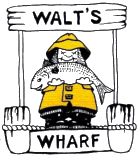 My buddy and I had lunch today at one of our favorite spots in Orange County, Walt’s Wharf on Main Street in Seal Beach. As usual, we sat in our favorite corner table in the bar next to the large windows looking out on the activity on Main Street. Walt’s is a shorts and Hawaiian shirt type of place that fits in beautifully with the laid back California lifestyle in this sleepy beach town. For those not familiar, Seal Beach is a throwback to the 1950s with a beach community that has never bought into the ritzy and showy Orange County way of life. You won’t see one Lamborghini parked on Main Street. Once Zorro (so-called because he has been known to dabble in Zinfandel) and I had settled in, our waitress brought us the wine list. Obviously wine-fluent, she politely offered to assist us in our choice. Now when was the last time you went into a restaurant and your waiter really knew something about the wine list? The wine list is a wine lover’s dream with beautifully chosen whites and reds that pair well with the restaurant’s oak-grilled fresh fish and steak preparations. Once you know the background on Walt’s, the comprehensive and well-chosen wine list is understandable. Walt Babcock was a successful Seal Beach dentist when he and his wife Mona started Walt’s Wharf in 1970. At that time, if you wanted fresh fish, you had to travel 10 miles to Newport Beach to the south or 25 miles to San Pedro to the north. Initially, Walt used his own fishing boat to procure the fresh fish for the restaurant. Later, he established contacts with fisherman so there was always an extensive choice of fresh fish on the menu. By 1978, the rigors of running a dental practice and a restaurant had sent Walt and Mona looking for a retreat. Upon finding 110 acres of land in the Santa Rita Hills region of Santa Barbara County, they sold Walt’s Wharf in 1979 and devoted themselves to winegrowing. Within a few years, several producers were making compelling wines from the Babcock’s 25-acre vineyard. In 1984, son Brian was attending the University of California Davis majoring in food science and enology. He joined his parents as winemaker and a winery was built. With Brian’s first harvest, he was awarded a double gold medal for the 1984 Babcock Estate Sauvignon Blanc, and Babcock Winery was off and running. Today Babcock Winery and Vineyards is a 20,000-case-a-year winery with 80 acres planted to multiple varietals including Pinot Noir. The wines feature estate fruit as well as grapes from other select California vineyards. Brian Babcock has won multiple winemaking awards including being named one of the “Top Ten Small Production Winemakers in the World,” in 1995 by the James Beard Foundation (the only American so honored). 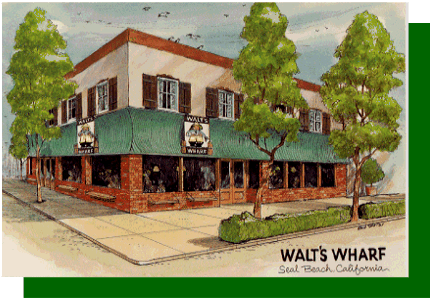 After the Babcocks had sold Walt’s Wharf Restaurant, Walt and Mona decided to reacquire it. They installed a live oak fire, put in an oyster bar, and added an extensive wine list. Along with organic produce from his own farm, Walt sought out growers of specialty vegetables to supply the restaurant. The restaurant is now a landmark in Seal Beach and wildly popular. As has always been the case, no reservations are taken. When you are at Walt’s, the temptation is to order a wine from Babcock Winery & Vineyards since the entire lineup of Babcock wines is available. But through his connections, Walt is able to acquire an impressive variety of primarily California offerings. The prices are very fair for restaurant standards. Say you want to start with some fresh oysters or the incredible oak-grilled artichoke. How about a Sauvignon Blanc from Ferrari-Carano, Geyser Peak, Mason, Duckhorn, Merry Edwards, Rochioli or Spottswoode ($24-45)? Oh, you only want a half-bottle? How about a split of Conundrum, Fiddlehead, or Merry Edwards Sauvignon Blanc. If its evening and you want to kick things off with Champagne, you can’t go wrong with Duval Leroy 1996 Brut ($58). When you move on to caramelized Alaskan King Salmon, it has to be Pinot Noir. But there are sixty Pinot Noirs to chose from on the list. Close your eyes and point or ask the waitress. The list includes standbys like 2005 Adelsheim Willamette Valley, 2005 Babcock Tri Counties Cuvee (see below), 2004 Buena Vista Carneros, 2004 Domaine Alfred Chamisal Vineyard Edna Valley, 2005 J Russian River Valley, 2004 Landmark Grand Detour Sonoma Coast, 2004 Stephen Ross Edna Valley, 2004Witness Tree Willamette Valley, and even a choice from New Zealand and Australia ($30-43). Ok, you have had all of these and you want something really special. Out comes the Reidel Vinum-styled Burgundy glasses. How about the entire 2004 lineup of Babcock special Pinot Noirs, three of which are not even available yet on the winery’s website? (The Grand Cuvee; Cargasacchi Vineyard, Santa Rita Hills; Oceans Ghost, Santa Rita Hills; Mount Carmel, Santa Rita Hills). The Grand Cuvee ($24) is so wildly popular it is already sold out at the winery. Or maybe your taste drifts to something else, like say, 2003 Calera Ryan Vineyard Mt Harlan, 2002 Wild Horse Cheval Sauvage Santa Barbara County, 2004 Davis Family Vineyards Russian River Valley, 2003 DuMol Russian River Valley, 2004 Etude Carneros and 2003 Etude Heirloom Carneros, 2002 Fiddlehead 728 Santa Rita hills, 2003 Goldeneye Anderson Valley, 2003 MacMurray River Cuvee Russian River Valley, 2004 Merry Edwards Olivet Lane Russian River Valley, 2004 Sea Smoke Ten Santa Rita Hills, 2004 St. Innocent Seven Springs Vineyard Willamette Valley, and more ($46-100). Wine service is perfectly orchestrated and the waitress actually returns over and over to refill your glass to the proper level.  The workhorse Pinot Noirs for Babcock are the Grand Cuvee ($24- 30) and the Tri-Counties ($22). I have written about the Tri Counties before in the PinotFile. It has been available for less than $20 at some retail stores and I consider it one of a handful of really satisfying California Pinot Noirs priced at less than a Jackson. Now in its fifth vintage in 2005, the Tri-Counties is 87% Estate fruit, 9% Viento Vineyard from Monterey, and 4% Rabbit Ridge Vineyard from San Luis Obispo. It is aged for 10 months in 20% new French oak, with 14.0% alcohol. 4,300 cases total with good retail distribution.
2004 Babcock Mount Carmel Vineyard Sta. Rita Hills Pinot Noir 14.5% alc., $72 (on wine list). · This was a terrific wine and even Zorro liked it. This was saying a lot, for it was a wine of finesse and elegance, so frequent in Pinot Noir, but unheard of in a Zin. It was beautifully balanced with a lengthy finish of hi-tone juicy cherries and cinnamon delivered with perky acidity. Amazingly pure and refined and a perfect accompaniment to lunch. I am looking to purchase some.
Babcock Winery & Vineyards, 5175 E Hwy 246, Lompoc, California. The website is www.babcockwinery.com, and the phone is 805-736-1455. A tasting room is open daily. A wine club offers significant discounts to wine purchasers. Walt’s Wharf, 201 Main St, (corner of Central and Main one block north of the Seal Beach Pier), Seal Beach, California. The phone is 562-598-4433. If you go at lunch, sit in the bar and look out the windows to watch the world walk by. You can also peruse the extensive number of white wines in the large wine cooler that lines one wall of the bar seating area. At dinner time, go early or expect a wait of an hour or more. Of course, waiting is rather painless, for you have that dreamy wine list to explore that really gets your appetite primed for what is to follow.
Pinot NeroItalians are well known for their classic wines from grapes like Barbera, Dolcetto, Nebbiolo, Sangiovese, Cabernet Sauvignon and Merlot. Pinot Nero (Pinot Noir) in Italy has never achieved the same distinguished status. Although Pinot Noir plantings are scattered throughout many parts of Italy, most of the grapes have been used in spumante or blended with other varietals such as Barbera, Merlot and even Cabernet Sauvignon! Very few mono-varietal examples of Pinot Noir reach American shores and even less is known here about the producers. A fine article appeared in Wine Business Monthly, June 28, 2001 written by Franco Ziliani titled “Pinot Nero in Italy.” There were some interesting factoids from that article:
Until the mid-1980s, Pinot Nero was never thought to be a major varietal in Italy. It was considered difficult to grow and less important than other varietals. The Frescobaldi estate at Pomino, near Florence, has some of the oldest vines of Pinot Noir in Italy. 10 ha of Pinot Noir are planted with vines from five to fifty years of age. The wines are currently blended with Sangiovese and not bottled as a mono-varietal although it is said that the Pinot Noir here has well defined varietal character. Some recent studies conducted at the Faculty of Agriculture of Vienna University indicate Pinot Nero is probably a product of a cross between Pinot Meunier and Gewürztraminer. Because of its tendency to natural mutation, there is great ampelographical diversity of Pinot Noir in Italy. Most authorities concur that the only Pinot Noirs that bear some resemblance to Burgundy come from the Alto Adige region of Northeast Italy. Leading producers here include Hofstätter (whose Villa Barthenau Sant’Urbano is considered Italy’s best Pinot Nero), Haas, Niedrist, Stroblhof, Gottardi, Lageder, Haderburg, and a group of co-operatives known as Cantine Produti. Seven percent of planted red varietals in Alto Adige are Pinot Nero. Depending on the region in Italy, Pinot Noir is called Pinot Nero or Blaubürgunder. I recently came across a Pinot Noir from the Alto Adige (South Tyrol) or Suüdtiroler DOC:
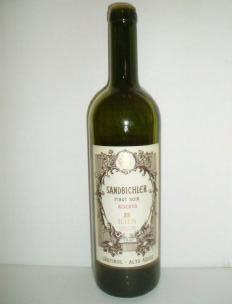 2003 H. Lun Sandbichler Vineyard Pinot Noir Reserva 13% alc., $26. H. Lun is the oldest privately owned winery in South Tyrol, established in 1840. It was owned by the Bracchetti family from 1976 to 1998 and then sold to a winegrowers cooperative where it is now run as an independent enterprise. The vineyard is located on the southern slopes of the Italian Alps where mountain breezes, warm sun and cool nights allow full maturation of Pinot Noir. Imported by Vinifera Imports Ltd, Ronkonkona, N.Y.. · The wine was bottled in a Bordeaux- style bottle (right). There was nice cherry fruit in a delicate nose. The wine was very light, more akin to a rosé than a Pinot Noir, but showing some nice red fruits, spice, oak and decent acidity. Those looking for effusive fruit and/or Pinot Noir’s higher qualities would be disappointed in this wine. A curiosity, but not something I would stock my cellar with.
Pinot BriefsI continue to get e-mail regarding the Pinot Noir IQ Quiz. A reader wrote that with regard to question 28, he felt that the correct spelling of the Burgundy chant was “Ban Bourguignon” and not “Ban de Bourgogne.” I must defer to Peter Mayle’s book, French Lesions (Adventures with Knife, Fork, and Corkscrew) in which he refers to the ritual gestures and lyrics of the Burgundy battle cry as “Ban de Bourgogne.” This chant is accompanied by “rhythmic clapping and arcane signals, a kind of drinker’s hand jive.” When I was in Burgundy, I found that this chant sprung up at the slightest provocation, at any convivial dinner in Burgundy. The starting position is with the arms bent and the hands positioned with the fingers cupped and held up on either side of the head. With the first chorus, the hands are swiveled back and forth from the wrist, rotating like the base of a wine bottle. For the middle chorus, the hands stop swiveling to clap nine times before returning to their original position for the third chorus. This is to be repeated a second time, at increasing speed, before the dinner participants finally recover with the help of a glass of Burgundy. In the last issue of the PinotFile, I gave the “By the Numbers” figures of acreage of major Pinot Noir growing regions of the world. My good friend, David Lloyd of Eldridge Estate, Mornington Peninsula, Australia wrote me to point out that I had omitted Australia. David is known in Australia as the “Clone Ranger’. His interest in clonal selection began when he visited Oregon in 1990 and met Barney Watson, who was studying the flavor profiles of clones. In 1995, Lloyd bought 3.5 ha on the Mornington Peninsula and began a search to understand clonal diversity. David currently writes for a wine blog called www.winorama.com.au. He sent me the following statistics about Australian Pinot Noir. Australia has about 4300 - 4500 acres of Pinot Noir (2004 figures). Gippsland (home of the famous Bass Philip) has but 60 acres of Pinot Noir. Victoria is the largest producer of Pinot Noir because it has many cool regions. Some regions have continental climates (Yarra Valley, parts of Southern Tasmania, and maybe Gippsland) and others have more maritime coolness (Geelong and the Mornington Peninsula). Specific regional Pinot Noir vineyard acreage in Australia is: Mornington Peninsula (Victoria) - 1110, Yarra Valley - 1900, Geelong - 353, Southern Tasmania - 468. The total acreage in Australia currently exceeds that of New Zealand. More on screw tops. A reader writes that first growth Chateau Margaux is doing screw cap trials of the estate’s second label wine, thought to be the first screw top bottling in Bordeaux since Haut Brion bottled a few 1969s with primitive screw caps. In Burgundy, Beaune merchant Jean-Claude Boisset is using the closure for some of his Cote de’Or wines. Laroche bottled some of his Chablis under screw cap in 2003.  Kathleen Inman of Inman Family Wines is donating 10% of her October on-line sales of 2005 Inman Family Pinot Gris and 2004 Inman Family Olivet Grange Pinot Noir to breast cancer research, education and outreach by a contribution to the Susan G. Komen Breast Cancer Foundation. 707-235-2071 or www.inmanfamilywines.com. 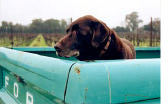
There is a terrific wine blog written by winemaker Kent Fortner of Green Truck Cellars and sent out by e-mail. Sign up at www.greentruckcellars.com. Kent keeps you up to date with the progress of his winemaking from harvest to bottling in a very personable and humorous style. If you ever had the inkling of making wine, read this first!
PinotFest“A public tasting of a sexy wine” The 8th annual PinotFest at Farallon Restaurant in San Francisco will be Saturday, November 18 from 3:00 to 6:00 PM. More than fifty top producers of Pinot Noir from Oregon and California will be pouring accompanied by hors d’oeuvres. Participating wineries include Au Bon Climat, Beaux Freres, Calera, Domaine Drouhin, El Molino, Etude, Fiddlehead, Flowers, Littorai, Merry Edwards, Patz & Hall, Paul Hobbs, Peay, Radio-Coteau, Saintsbury and many others. Tickets went on sale October 1and are $100. The restaurant is at 450 Post St and the number to obtain tickets is 415-956-6962.
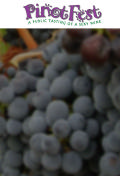
Three Amigos Matched UpThe other night I was at a meeting of my wine group, Le Grand Crew, which has been going strong since 1989. The dinner featured three courses accompanied by wines from the 2002 vintage. The second course featured a showdown between three very prominent Pinot Noirs which have much in common. The wines were: 2002 DuMol Finn Russian River Valley Pinot Noir, 2002 Kistler Kistler Vineyard Russian River Valley Pinot Noir, and 2002 J. Rochioli East Block Russian River Pinot Noir. These three producers are alike in that there is no public tasting offered for these wines, all are sold almost exclusively through a mailing list, and they rarely appear on restaurant wine lists. This was a unique opportunity to taste them side by side.
2002 DuMOL Finn Russian River Valley Pinot Noir 326 cases, $75. Occidental Road Vineyard and Widdoes Vineyard. Pommard, Swan, Calera, and old Beringer selections. Aged 16 months in 75% new oak. The winemaker is Andy Smith. Www.dumolwine.com · A terrific wine and my favorite of the trio. Very attractive Bing cherry, spice box, and sandalwood aromas draw you in with similar flavors repeated on the palate. Exquisite balance. This wine will age well for several years.
2002 Kistler Kistler Vineyard Russian River Valley Pinot Noir $75, 1790 cases. Aged 14 months in 100% new oak. Winemakers are Mark Bixler and Steve Kistler. Www.kistlerwine.com. · Beautiful aromatics featuring raspberries and floral notes. The flavors never deliver much punch and the finish is shallow and oaky. Among our group of 20, I could not find one person who really liked this wine. As much as I like Kistler Chardonnay, I have never been a fan of the Kistler style of Pinot Noir.
2002 J. Rochioli East Block Russian River Pinot Noir $90, 150 cases. Joe Rochioli’s original East Block plantings of four acres date to 1968 and were propagated from a selection that Rochioli obtained from the old Karl Wente Vineyard in Livermore. The winemaker is Tom Rochioli. · Many tasters really fawned over this wine. The nose and flavors tend toward the earthy, mushroom, wet leaf profile with plenty of dark black cherries. A very concentrated and rich style. No website!
|